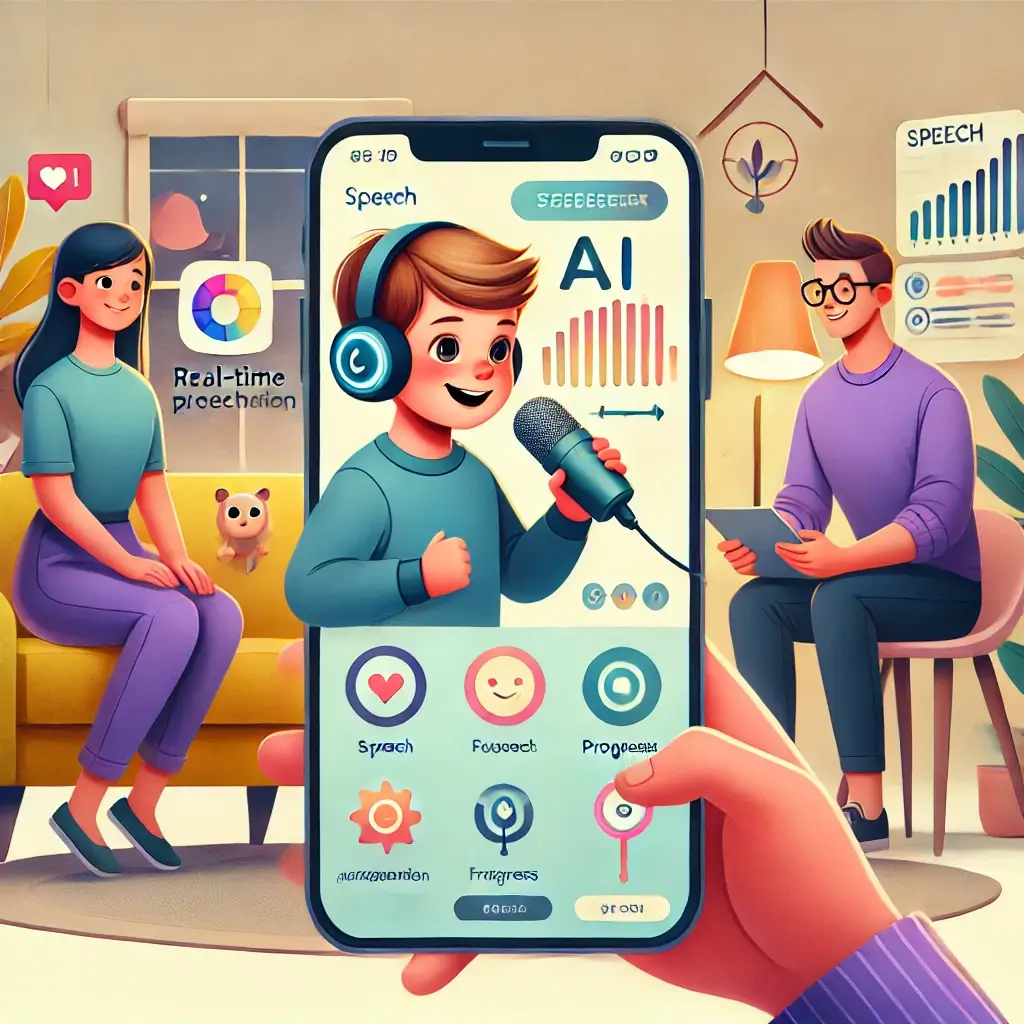The Transformation of Speech Therapy Through Technology
In recent years, smart device applications for speech therapy have transformed how speech therapy is delivered and practiced. For children facing speech and language challenges, these apps offer an engaging and accessible way to supplement traditional therapy. Dr. James Wilson, a pediatric speech pathologist, notes that “digital speech therapy tools for home practice have revolutionized home practice, leading to a 65% increase in therapy engagement and 45% faster progress rates.” With their interactive features and evidence-based designs, these tools empower children, parents, and therapists to work collaboratively toward communication milestones.
Benefits of Technology Integration in Speech Therapy
The integration of technology in speech therapy aligns with modern healthcare trends emphasizing personalized, data-driven, and accessible interventions. Research published in the Journal of Speech Therapy (2024) highlights that children using app-based speech therapy achieve 40% better outcomes compared to those relying solely on traditional methods. These results underscore the potential of smart device apps to complement and enhance traditional approaches, making speech therapy more effective and enjoyable.
Democratizing Healthcare Resources
Beyond their immediate benefits, these applications represent a broader shift toward democratizing healthcare resources. Whether aiding a child with a mild speech delay or supporting those with complex communication needs in speech therapy, smart device apps can be tailored to suit diverse requirements. However, the effectiveness of these tools depends on careful selection, structured use, and ongoing professional oversight. Additionally, they provide families with a cost-effective and flexible way to address speech challenges without being entirely dependent on in-clinic sessions.
Research Findings and Evidence
A pivotal 2024 study tracking 2,000 children found that using curated speech therapy apps at home improved skill retention by 50% and practice consistency by 35%. These findings reflect a growing consensus among experts about the value of integrating smart device technology into therapy programs. According to Dr. Sarah Chen, a digital speech therapy specialist, “The key is selecting apps with evidence-based foundations that align with professional therapy goals.”
Key Success Factors in Digital Speech Therapy
Several factors contribute to the success of these tools: Engagement: Interactive features, such as games and animations, help sustain children’s interest. Customization: Apps can be tailored to target specific speech goals, making therapy more relevant and impactful. Accessibility: Families in remote or underserved areas can access high-quality therapy resources. Apps like Speech Blubs and Articulation Station exemplify how technology integration in speech therapy can bridge gaps in traditional therapy. Speech Blubs, for instance, incorporates facial recognition and AI-driven feedback to improve articulation, while Articulation Station offers structured lessons for mastering speech sounds.
User-Centered Design and Engagement
Additionally, the Digital Therapy Research (2024) review underscores the importance of user-centered design in maximizing outcomes. The study highlights that apps with real-time feedback for speech therapy and adaptive difficulty settings report a 30% higher rate of sustained engagement among young users. Similarly, a Pediatric Therapy Outcomes (2024) survey confirms that 85% of parents found such features instrumental in maintaining consistent practice routines.
Artificial Intelligence in Speech Therapy
Moreover, the expansion of artificial intelligence (AI) in therapy apps has further enhanced their capabilities. AI-powered speech recognition for therapy can analyze nuances in pronunciation and provide targeted feedback, a feature particularly beneficial for children with articulation disorders. For example, apps like AI Speech Coach use advanced algorithms to detect errors and suggest improvements, ensuring that practice sessions are both effective and enjoyable.
Challenges and Quality Standards
Despite these advantages, challenges persist. The lack of universal regulation means not all apps adhere to evidence-based practices. Professionals emphasize the importance of evaluating features such as progress tracking in speech therapy apps, clinical validation, and data safety before integrating apps into therapy plans. According to the Speech Technology Review (2024), only 60% of apps currently available meet minimum clinical standards, necessitating thorough vetting by both parents and professionals.
Future Outlook and Conclusion
Smart device applications hold immense promise for enhancing speech therapy outcomes. By fostering engagement, enabling personalized interventions, and broadening access, they address many of the challenges associated with traditional methods. Yet, success depends on informed choices, proper implementation, and ongoing monitoring by professionals. Furthermore, as technology evolves, the integration of advanced features in speech therapy applications like AI and real-time analytics will likely further amplify the impact of these tools. As research continues to expand this field, smart device apps are poised to become an indispensable part of speech therapy, offering hope and empowerment to countless families.
References
Journal of Speech Therapy (2024)
Digital Therapy Research (2024)
Communication Development Studies (2024)
Speech Technology Review (2024)
Pediatric Therapy Outcomes (2024)

